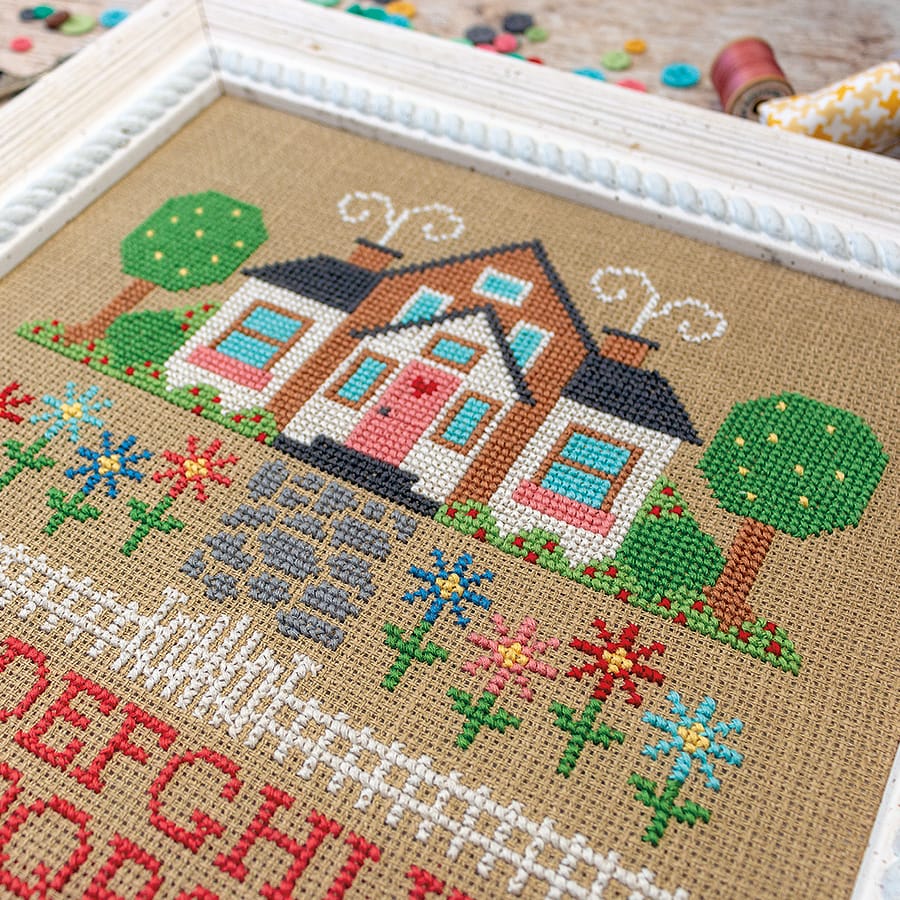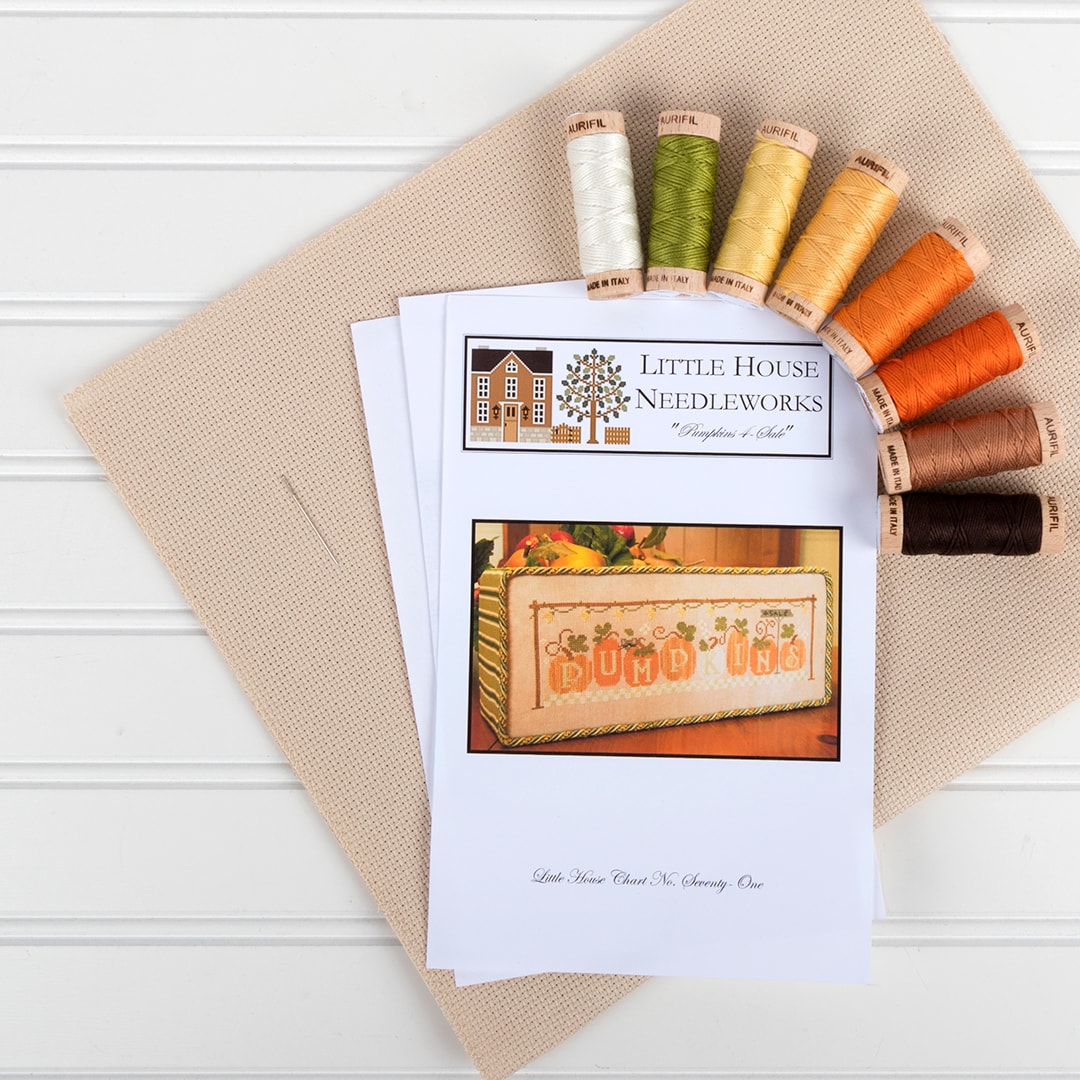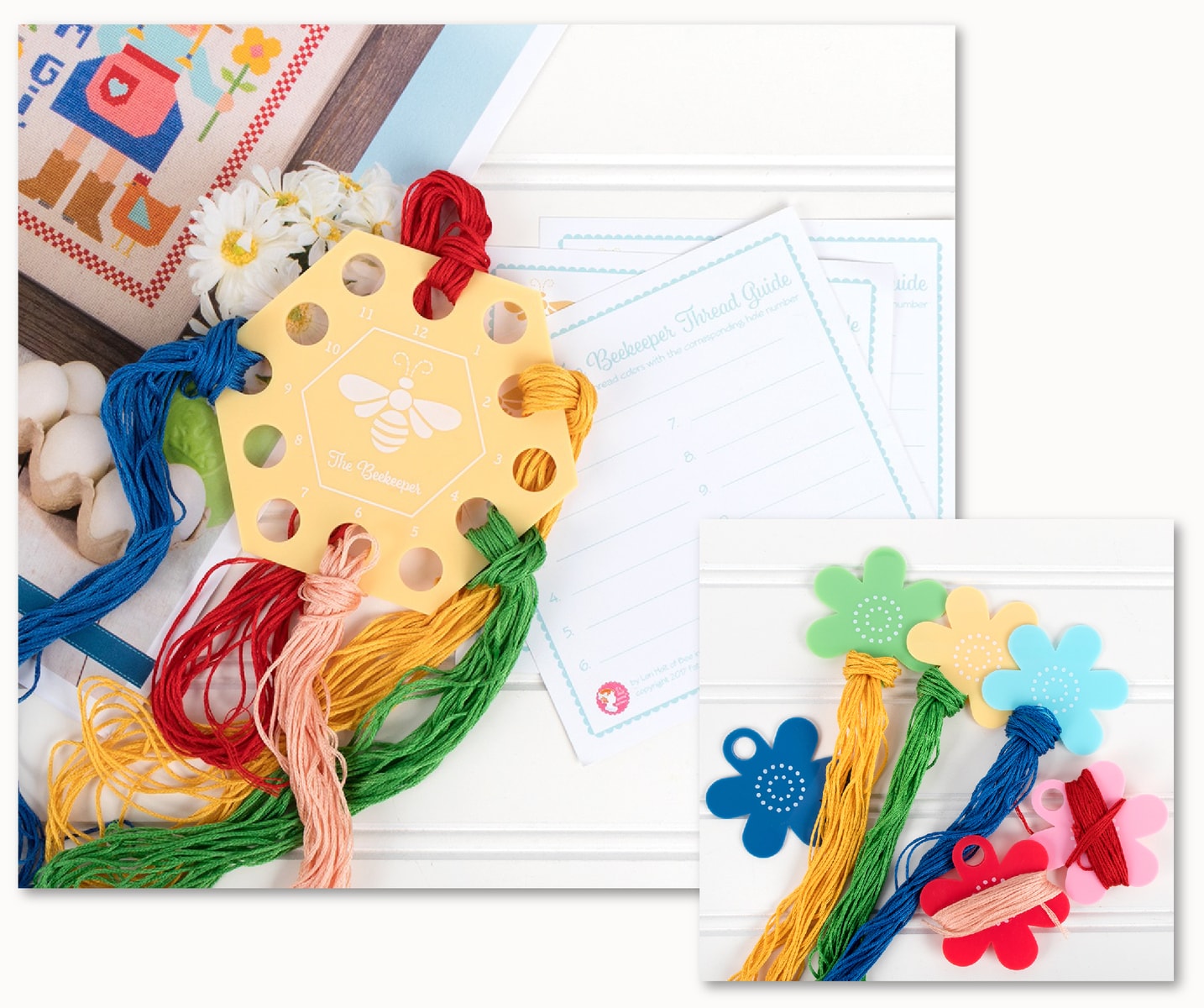If you want to learn how to cross stitch, you’ve come to the right place! We’ve created this short guide to get you started.

Cross stitch is one of the oldest documented forms of needlework, with pieces dating back to the middle ages (source). What is it about this form of needlework that’s survived the test of time? All those little X’s add up to something beautiful with which to adorn our homes, and the enjoyment we get from making it is undeniable. We love cross stitch for the challenge, beauty, simplicity, and portability. There’s no limit on age or style when it comes to modern needlework, with patterns to suit any taste.
Cross Stitch Supplies

In terms of supplies for cross stitch, the basics you’ll need to get started are:
Types of Cross Stitch Cloth
Cross stitch cloth comes in various colors, types, and gauges (That’s the number of holes per inch that determines the size of your stitches.)
Aida, evenweave and linen are the most common types of cross stitch fabric. Standard Aida cloth has a slight canvas feel to it and is a nice fabric for beginners because the holes are large and easy to see. Aida is 100% cotton and comes in several different cloth/stitch counts.
Monaco is an evenweave fabric that is 100% cotton and is available in only 28 count. Stitches are usually made over two threads/squares (equivalent to 14 count).
Lugana and Jobelan are both evenweave fabrics (meaning the threads in the fabric are the same size) and are cotton/rayon blends. They are available in several count sizes (most common are 28 and 32), and stitches are usually made over two threads/squares.
Linen is 100% linen, and the threads are not even in size (some threads are thinner than others and there are occasional ‘slubs’ in the fabric). Linen fabrics are available in several count sizes and, generally speaking, are a little more difficult to use, especially for beginners – stitches are usually made over two threads/squares.

The cloth count denotes the size of holes for the embroidery floss to go through, as determined by the spacing of the warp and weft of the fabric. The number of holes in a linear inch denotes the fabric count. I.e., ten holes per inch would be a 10 count cloth. Typical sizes for Aida and other cross stitch fabrics are 7, 10, 11, 12, 14, 16, 18, 22, and 28 count. The higher the number, the finer the cloth (and the harder to see the holes!). Lower numbers will produce larger stitches and tend to be easier for beginners.
Floss
There are many types of embroidery thread, but 6-strand cotton floss is the standard for cross stitch. It comes in almost any color you can think of and ranges from large, standardized color lots to small-batch, hand-dyed floss. Some popular types of embroidery floss are DMC, AuriFloss, Cosmo, Weeks Dye Works, The Gentle Art, and Classic Colorworks.
While DMC and AuriFloss are both 6 six strands, DMC strands are a bit thicker, and more strands are typically used when stitching with AuriFloss as compared with DMC. AuriFloss, made in Italy, comes on 18 yard spools, while DMC, made in France, skeins are 8.7 yards. Cosmo is 100% Egyptian cotton, and Weeks Dye Works, The Gentle Art, and Classic Colorworks are all hand-dyed which gives a variegated look.
DMC to AuriFloss Color Conversion Chart

Although floss comes in strands of six, you’ll rarely use them all at once. The cloth count, pattern, and sewing tension will dictate the number of strands to use for each chart. A general guide for two common floss types is shown below. At the start of a project, follow the pattern recommendations or experiment with a few complete stitches on the edge of your cloth to see what looks best in terms of coverage and stitch definition.

Two good options for keeping your threads organized for each project are the Beekeeper Thread Minder and Thread Guide and the Floss Flower Thread Bobbins by Lori Holt. They allow you to label and note your floss colors to keep them all straight.
Needles
Tapestry needles, with their large eyes and blunt tips, are recommended. Experiment with sizes and styles that work for you. Sizes range from approximately 18 to 28, and the higher the number, the finer the needle. As a point of reference, a Size 26 needle works well for Aida 14 count. DMC has a handy guide for which needle gauge to use with various sizes of cross stitch cloth.
Frames and Other Notions
Most stitchers will use a frame to stretch the cloth on, allowing them to see the stitches and hold the cloth taught for even sewing. A classic round embroidery hoop is very inexpensive and easy to use, and they’re cute to use for stitching and displaying completed projects. Rectangular tube-like frames known as Q Snaps are modular and can be expanded with the project as it grows. There are other types of frames, such as scroll frames, and some people don’t use a frame at all! There are a huge array of notions to keep cross stitch frames, floss, needles and, charts in check.
Preparing to Cross Stitch
When preparing cloth, there is normally no need to wash it, but you may want to iron it on high heat with some steam to get the wrinkles out. Cut it approximately four inches larger than your pattern (chart) on all sides. When working with Aida, you’ll want to tape or run a zig-zag stitch along the edges of it with your sewing machine to keep it from fraying. Center your cloth within an embroidery hoop or Q Snap frame if you’re using one, and begin stitching. You may want to start in the middle or with any border stitches first to anchor your counting. You can use placeholders like magnetic boards or highlighting strips to mark your pattern as you go.
For more info, check out Cross Stitch University on the Fat Quarter Shop Flosstube Channel.
Reading a Pattern
In counted cross stitch, the stitch pattern is on the chart, and you count on your cloth to see where the stitches should go. In stamped cross stitch, the pattern is stamped directly on the cloth, and you stitch directly on top of the design on the cloth. It’s Sew Emma cross stitch patterns are counted cross stitch, and they come as full-color charts.
For tips on getting started, check out Kimberly’s FlossTube for Beginners video: How to read a cross stitch pattern.
Types of Stitches
The very heart of cross stitch is an x-shaped stitch that is uniform in height and width. There are several techniques you can use to fill in a large space or make rows even, such as the Danish Method and the English Method. Kimberly covers the Loop Method, Railroading, and other types of stitches in her free tutorial, FlossTube for Beginners video: All about stitches.
Cross Stitch Videos on YouTube
Please join us on our Fat Quarter Shop Flosstube for more free cross stitch tutorials, sew-alongs, and inspiration. We premier new episodes of FlossTube on Wednesdays at 9 AM CST!
Stitch along with us!
Follow us at @fqsxstitch on Instagram and Fat Quarter Shop Cross Stitch on Facebook, and join Kimberly’s Stitch Squad group on Facebook to talk to other stitchers and quilters.
Happy Stitching!






6 comments
Hello, Is there a way to tell us as we shop whether or not a chart is in color? I read them most easily and would love to have that information before purchasing.
Thank you so much.
Kathleen, I’ll check on that for you.
Thank you Kimberly Jolly! This is a perfect article for new cross stitchers. I want to begin doing this new form of needle work and have been watching your YouTube cross stitch channel trying to figure it all out. You’ve made my shopping much easier! I now know what to purchase.
Thank you!